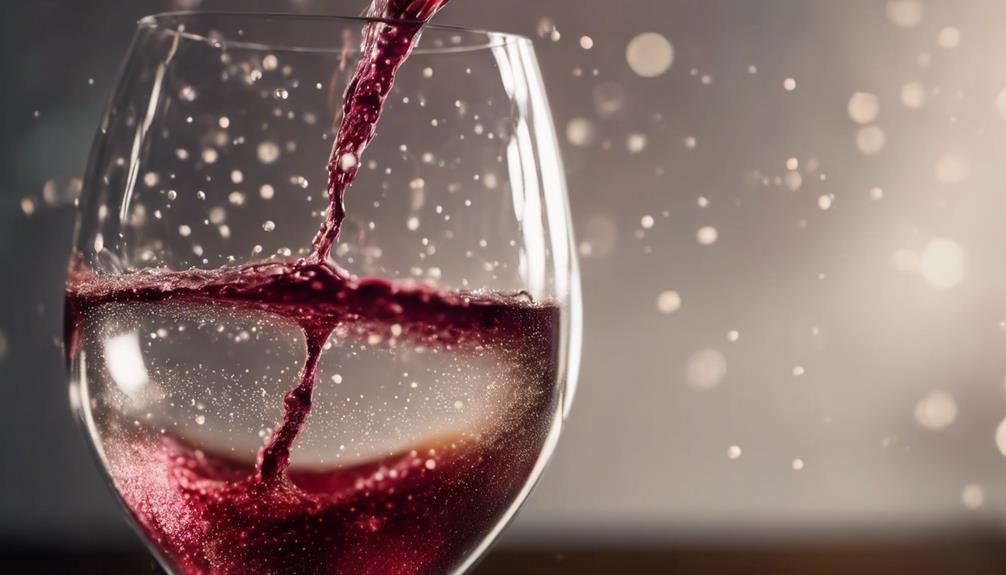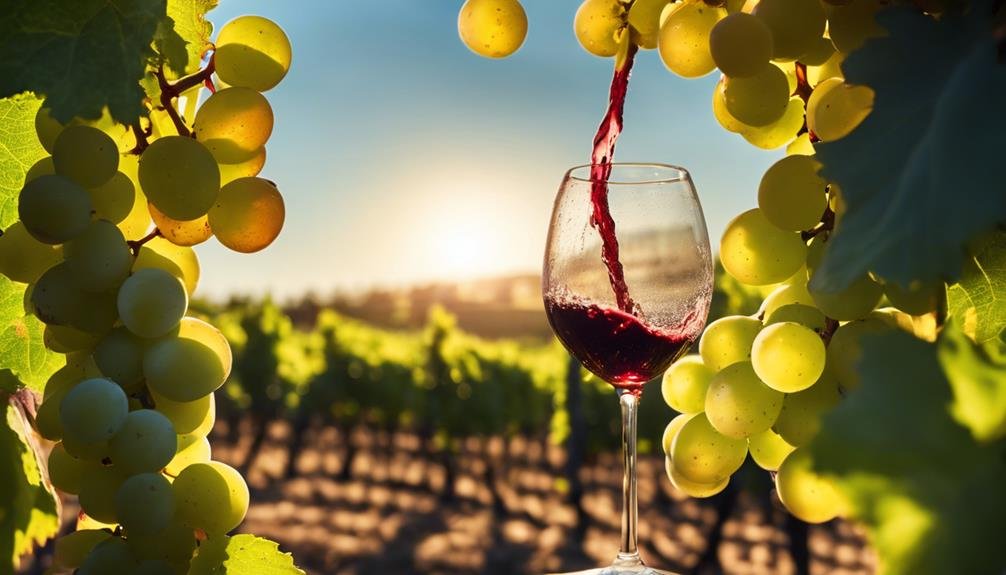Maintaining ideal oxygen levels is essential for enhancing wine quality. The right balance influences taste, aging, and overall sensory experience greatly. Around 6 parts per million of oxygen in wine can enhance its flavor profile, while over-oxygenation leads to unwanted cooked fruit notes. Tools like NomaSense and Orbisphere 410 are important for monitoring oxygen levels accurately. Oxygen exposure impacts wine taste through oxidation, with perfect levels contributing to complexity. Prevent reductive flavors with proper decanting, and store wine horizontally in a cool, dark place. Understanding oxygen's role in wine quality is crucial for enjoying the best flavors.
Importance of Optimal Oxygen Levels
The maintenance of ideal oxygen levels in wine plays a significant role in preserving and enhancing its quality throughout the aging process. Achieving the right oxygen balance is vital for taste enhancement, as excessive oxygen can lead to quicker wine degradation, while too little can result in undesirable foxy flavors.
Wines with around 6 parts per million (ppm) of oxygen tend to taste better, with sweet spot oxygen levels enhancing complexity. Over-oxidized wines can exhibit unpleasant cooked fruit flavors, while wines with insufficient oxygen may display off-putting characteristics.
It is important to manage oxygen levels carefully to make sure that the wine matures gracefully and develops desirable taste profiles over time.
Tools for Oxygen Measurement
Achieving precise oxygen levels in wine necessitates the utilization of specialized tools for accurate measurement and monitoring. These tools play an essential role in ensuring the quality and preservation of wine.
Some common tools used for oxygen measurement in wine include:
- NomaSense: This tool can measure both dissolved oxygen and headspace oxygen in wine.
- Orbisphere 410: Known for its accuracy in monitoring oxygen levels in wine.
- Vinometer: A simple yet effective tool for measuring the oxygen content in wine.
- Optical Oxygen Meter: Utilizes optical technology to provide real-time oxygen monitoring in wine.
These tools are essential for winemakers to maintain the ideal oxygen levels in wine, ultimately influencing its taste and quality.
Oxygens Influence on Wine Taste

Within the domain of winemaking, oxygen plays a pivotal role in shaping the taste profile of wines. Oxygen exposure affects wine taste through the process of oxidation. Wines with an ideal level of 6 ppm of oxygen exhibit enhanced complexity.
However, over-oxidized wines develop undesirable cooked fruit flavors, while wines with too little oxygen can taste foxy. Surprisingly, white wines tend to show oxidation differences more prominently than red wines. The perfect oxygen-to-wine ratio is essential in achieving the desired taste, with sweet spot oxygen levels contributing positively to wine flavor.
Understanding the effects of oxygen on wine taste is vital for winemakers and enthusiasts alike to appreciate and evaluate the quality of wines accurately.
Managing Oxidized and Reductive Wines
Managing oxidized and reductive wines requires a nuanced understanding of their distinct flavor profiles and the appropriate techniques for addressing their specific characteristics. When dealing with these types of wines, it is essential to bear in mind the following:
- Restoring oxidized wines: Once a wine is oxidized, it cannot be restored to its original state.
- Preventing reductive flavors: To avert reductive flavors, especially common in wines under screw caps, proper decanting techniques can help reduce off aromas.
- Avoiding over-oxidized wines: Over-oxidized wines should be shunned as they can have a profound impact on the taste.
- Enjoying value wines when young: Value wines are best enjoyed when they are young to savor their intended flavors and aromas.
Recommendations for Wine Enjoyment

To fully appreciate and savor wines, it is important to embrace the nuances of each bottle's unique characteristics and understand how best to enhance the tasting experience. When it comes to wine enjoyment, consider wine pairing as a way to elevate your taste experience. Pairing wine with complementary foods can bring out the best flavors in both.
Additionally, essential storage tips are vital for maintaining the quality of your wine. Store your wine bottles horizontally in a cool, dark place to prevent oxidation and maintain freshness. Avoid storing wine in areas with temperature fluctuations.
Frequently Asked Questions
How Does Oxygen Impact the Aging Potential of Wine?
Oxygen balance is essential in wine aging, influencing wine preservation and flavor development. Proper oxygen exposure enhances wine complexity, while excess oxygen can lead to oxidation, affecting the aging potential negatively.
Can Oxygen Levels in Wine Affect the Color of the Wine?
The color of wine can be affected by oxygen levels. Oxygen triggers chemical reactions influencing flavor development. Proper oxygenation enhances a wine's hue, while imbalance may lead to undesired changes in color, underscoring the intricate art of winemaking.
Are There Specific Types of Wines More Prone to Oxidation?
Certain wines, like white wines and rosés, are more susceptible to oxidation due to their lighter pigmentation and flavor profile. Reducing oxidation in white wines and managing oxygen levels in rosé production are essential practices to maintain wine quality.
Does the Shape of the Wine Bottle Affect Oxygen Exposure?
Does the shape of the wine bottle influence oxygen exposure? Wine bottle design impacts oxygen ingress, affecting wine preservation. Understanding how bottle shape regulates oxygen levels is essential for maintaining wine quality and taste integrity over time.
How Does Temperature Affect Oxygen Interaction in Wine?
Temperature sensitivity influences oxygen diffusion in wine. Higher temperatures accelerate oxygen intake, impacting wine flavor. Cooler temperatures slow oxygen interaction, preserving wine quality. Controlling storage temperatures is essential for managing oxygen levels and ensuring the best wine taste.
Conclusion
To sum up, the intricate dance between oxygen and wine quality is vital for the enjoyment of this beloved beverage. Understanding the impact of oxygen levels, utilizing tools for measurement, and managing oxidized or reductive wines are essential steps in preserving the true essence of wine.
By appreciating the delicate balance of oxygen in wine, connoisseurs can elevate their tasting experience and savor the complexities that this element brings to the world of oenology.